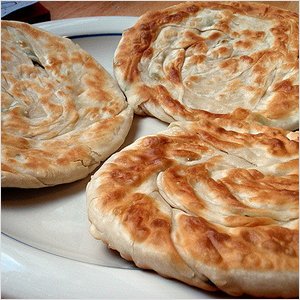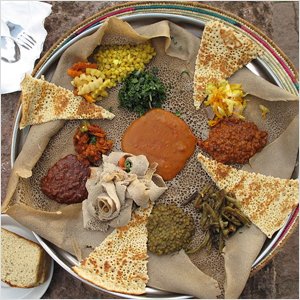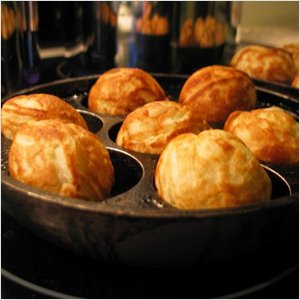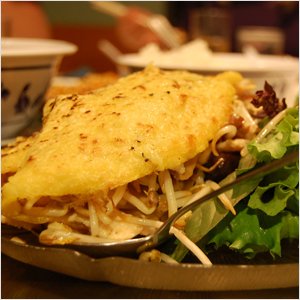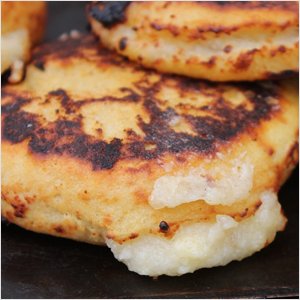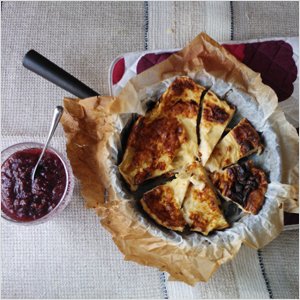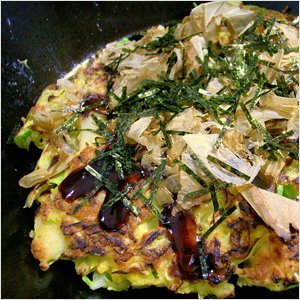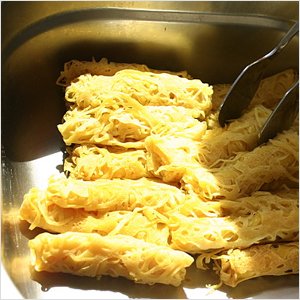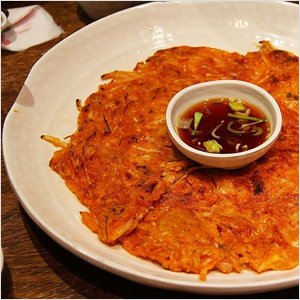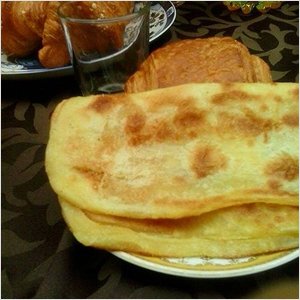For most Americans, hearing “pancakes” would conjure up thoughts of a stack of fluffy, round-shaped flapjacks with butter and maple syrup on top. But do you know that you can find different iterations of the pancake in almost every cuisine in the world? Some are similar to the fluffy ones you grew to love, some are thin and flaky, some are savory and chewy, and some are thick and sweet – but all of them are delicious and well-loved by their locals, no matter where they are from. Let’s take a look at the pancakes around the world that will seem unusual to most of us:
1. Cong you bing – China
Known as the scallion pancakes on the Western shores, cong you bing is popular street food in China. It’s an unleavened flatbread made from dough instead of batter. It’s crunchy on the outside and tender on the inside, chock full of spring onions. This chewy and flaky pancake has a sweet, nutty, savory and greasy deliciousness because it’s cooked in sesame oil. Often, cong you bing is served with a dipping sauce made from soy sauce.
2. Injera – Ethiopia and Eritrea
Injera is a fermented, sourdough flatbread that is risen using wild yeast. It looks like a crepe, but it has a spongy and porous texture since it is made of teff flour (a grain that is a bit similar to quinoa). The thin batter of injera makes a bread that is smooth and elastic on the underside but porous on the other. More than a flatbread, it actually serves as a base of most of their foods. A variety of spiced meat, stews, vegetables, and salads are placed on top of injera, and diners tear it with their hands to scoop up bite-sized portions of the food.
3. Aebleskiver – Denmark
The aebleskiver is not like your typical pancakes – first of all, they are spherical. It’s made of a batter based on egg, flour, and dairy, just like our typical pancakes, but what makes them special is that they are poured into a special cast iron pan with round indentations. As each pancake firms up, it rotates in its indentations. They are light and puffy and are often sprinkled with powdered sugar, or dipped in jam.
4. Banh xeo – Vietnam
This traditional Vietnamese pancake, despite the omelet-like yellow color, usually contains no eggs at all. Banh xeo is made of rice flour and colored (and flavored) by turmeric. The phrase literally means “sizzling pancake,” and that’s actually true when it hits the fat in the hot pan. It is typically stuffed with vegetables, bean sprouts, and meat like pork and shrimp. On the side, it is usually served with fresh lettuce and herbs.
5. Arepa – Colombia and Venezuela
Arepas are a staple, traditional dish to the Venezuelan and Colombian people, just like corn tortillas are to the Mexicans and Central Americans. These are made of cornbread dough often eaten with cheese, fermented milk, and avocado, or split in half to stuff savory ingredients (like chorizo, beans, and stewed beef) like as a sandwich. Colombian arepas are mostly larger, flatter and floppier; while Venezuelan varieties are usually thicker and rounder.
6. Pannukakku – Finland
Most pancakes are fried, but pannukakku is oven-baked. It’s a fluffy, custardy, puffy pancake with a crisp top and gooey inside, which is served at breakfast, brunches or dessert. This Finnish specialty is popular with a berry syrup on top, or jam, fruit, cream and/or powdered sugar. If it’s consumed as a dessert, it is often topped with chocolate syrup and ice cream.
7. Okonomiyaki – Japan
Okonomiyaki came from the words “okonomi,” which means “to one’s liking,” and “yaki” which means “grilled” – so expect that this savory version of the Japanese pancake is versatile and could be adjusted to everyone’s tastes. It is made of a batter consisting of flour, eggs, shredded cabbage, and meat, and then topped with a variety of condiments and ingredients, just like pizza. Toppings commonly include meat, cheese, seafood, nori flakes, pickled ginger, Japanese mayonnaise or plum sauce, and tonkatsu sauce. In some places like Osaka, the fillings are stirred right into the batter; while others serve okonomiyaki in layers, complete with fried egg and yakisoba noodles.
8. Roti jala – Malaysia
When translated, roti jala means “net bread,” because it looks like a net or a lace doily because of how it was made. This traditional Malay crepe made of flour, turmeric, egg, and coconut milk; and it is delicate and tender when well-done. Usually served at events like weddings and festivals, roti jala is often eaten with chicken curry, spicy beef floss or caramelized beef curry as a substitute to rice.
9. Kimchijeon – South Korea
Kimchijeon, or kimchi pancakes, is a chewy, tangy, spicy and crispy pancake made of a Korean staple – kimchi (fermented vegetables). For outsiders, who would have thought that this popular spicy Korean food can be mixed into a pancake batter? But it’s a favorite in Korea! It is served as a seafood snack with ground pork or a dip made of soy sauce and ginger or rice vinegar. Besides kimchi, the pancake batter is made of flour, potato starch, chopped scallions, and kimchi juice.
10. M’Semen – Morocco
This traditional Moroccan pancake is made from yeasted semolina dough that is stretched until thin. It is usually buttery and is stuffed on the inside with a sweet or savory filling like honey or spiced ground meat. While it can be fried or baked, it is typically square, which is unusual for pancakes.

